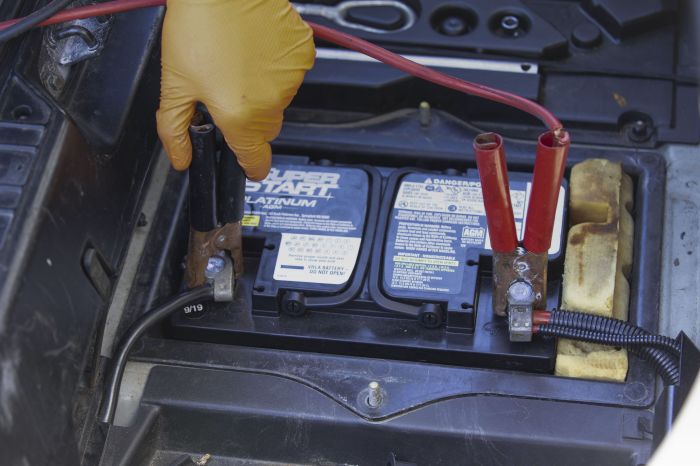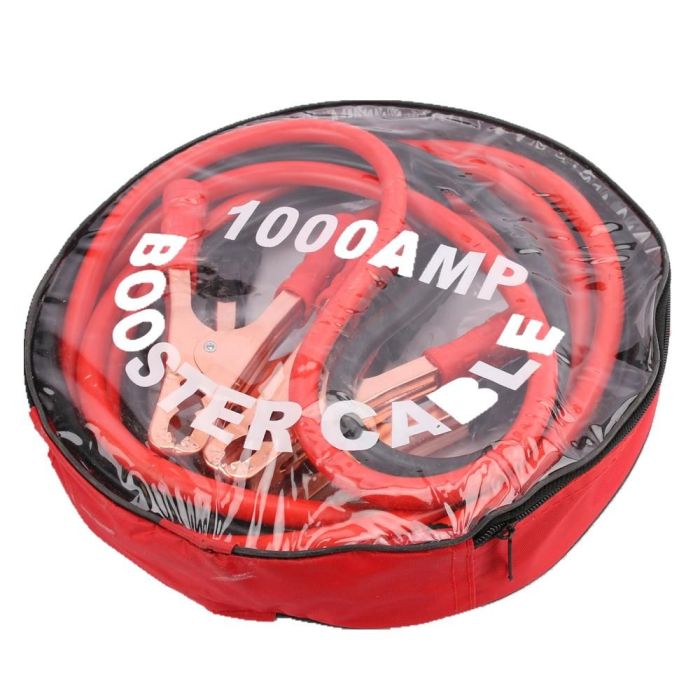How to jump start a car sets the stage for an essential skill every driver should master. Understanding the process of jump starting isn’t just about reviving a dead battery; it’s about ensuring you can get back on the road safely and confidently. This guide will delve into why jump starting is necessary, the components involved, and the common scenarios that may lead to a battery needing a boost.
Browse the multiple elements of Mazda Speed3 engine specs to gain a more broad understanding.
From safety precautions to a detailed step-by-step procedure, this article covers everything you need to know to jump start a car effectively. You’ll also discover alternative methods, troubleshooting tips for common issues, and maintenance advice to help prevent future battery failures.
Obtain direct knowledge about the efficiency of Best family vehicles 2025 through case studies.
Basic Understanding of Jump Starting a Car: How To Jump Start A Car

Jump starting a car is a crucial skill for any driver to possess, especially during emergencies when a vehicle’s battery fails. This process involves using another vehicle’s battery to provide the necessary power to start a car that won’t start due to a dead battery. Understanding the components involved in jump starting a car can significantly simplify the process and help you react effectively when the situation arises.
The essential components necessary for jump starting a car include jumper cables and a functioning battery from another vehicle. Jumper cables are heavy-duty wires equipped with clamps at both ends, while the battery, usually located under the hood, stores electrical energy. Common situations that may require a jump start include leaving the headlights on for an extended period, a battery that has aged and lost its charge, or unusually cold weather that affects battery performance.
Safety Precautions

Before attempting to jump start a car, it is vital to take specific safety measures to prevent accidents and injuries. Always ensure that both vehicles are turned off and parked safely away from traffic. Checking the condition of the jumper cables for any frays or damage is also essential, as damaged cables can lead to sparks or short circuits.
Potential hazards associated with jump starting a vehicle include the risk of electric shock, battery explosions due to gas buildup, and the possibility of damaging the vehicle’s electrical system if not done correctly. To enhance safety during the process, wearing personal protective equipment (PPE) is recommended. Essential PPE includes safety goggles to protect your eyes from sparks and gloves to shield your hands from battery acid.
Step-by-Step Procedure
Following a structured procedure is crucial for effectively jump starting a car. Here is a detailed step-by-step guide:
1. Gather the tools needed:
– Jumper cables
– A functioning vehicle with a good battery
– Personal protective equipment (safety goggles and gloves)
2. Connect the jumper cables in the correct sequence:
– Start by connecting one red clamp to the positive terminal of the dead battery.
– Attach the other red clamp to the positive terminal of the working battery.
– Next, connect one black clamp to the negative terminal of the working battery.
– Finally, attach the other black clamp to an unpainted metal surface on the car with the dead battery.
3. Start the working vehicle and let it run for a few minutes to charge the dead battery before attempting to start the non-functioning vehicle.
4. Once the dead battery has received enough charge, attempt to start the vehicle. If it doesn’t start, wait a few more minutes and try again.
5. After the vehicle starts, carefully disconnect the jumper cables in the reverse order of connection.
Alternative Methods
In addition to using jumper cables, there are alternative methods for starting a car that may not be readily available. One effective option is using a portable battery jump starter, which is a compact device designed to provide a jump start without needing another vehicle. These jump starters often come equipped with built-in safety features, such as reverse polarity protection, to prevent incorrect connections.
Another alternative method is push starting a manual transmission vehicle. This technique requires the help of others to push the car while the driver engages the ignition in second gear, allowing the vehicle to start as it gains momentum. However, this method is not suitable for cars with automatic transmissions.
When comparing traditional jump starting techniques with newer technologies, the use of battery jump starters is becoming increasingly popular due to their convenience and safety. They eliminate the need for another vehicle and reduce the risk of electrical mishaps.
Troubleshooting Common Issues

When jump starting a vehicle, various problems may arise. Common issues include:
– Sparks during connection: This can indicate improper connections or faulty cables.
– No response from the dead battery: This may suggest a completely dead battery or a more significant electrical issue.
– Overheating cables: Overheating cables can be a sign of excessive current draw, often due to a weak or faulty battery.
To address these issues, here’s a comparison of symptoms and potential solutions:
| Symptom | Potential Solution |
|---|---|
| Sparks during connection | Check cable connections for correct placement and inspect cables for damage. |
| No response from dead battery | Consider battery replacement or further diagnostics if the battery is beyond recovery. |
| Overheating cables | Disconnect cables immediately and inspect both batteries for issues. |
Maintenance Tips
Preventing battery failure requires regular maintenance and keen observation. Routine checks on the battery condition, including inspecting for corrosion at the terminals, can significantly extend battery life. Ensuring that battery terminals and cables are clean and secure is crucial to maintaining good electrical connections.
A checklist of maintenance tasks for car batteries includes:
– Regularly checking battery charge levels.
– Inspecting and cleaning battery terminals and connections.
– Testing the battery’s performance at least once a year.
– Replacing batteries that are older than three to five years, depending on their usage and condition.
When to Seek Professional Help, How to jump start a car
Certain situations necessitate professional assistance for battery-related issues. Signs that indicate battery replacement may be required instead of a jump start include a battery that swells or leaks, an inability to hold a charge after repeated jump starts, or significant corrosion on the battery terminals.
Identifying reliable mechanics who specialize in battery services can help ensure that battery issues are addressed efficiently. Recommendations from friends or online reviews can aid in selecting a trustworthy service provider. Regularly scheduled check-ups can also help in maintaining battery health and avoiding unexpected breakdowns.
Closure
In conclusion, mastering how to jump start a car is a vital skill that can save you time and trouble. With the right knowledge, tools, and safety measures in place, you can confidently tackle battery issues when they arise. Remember to keep up with regular maintenance checks and don’t hesitate to seek professional help when necessary, ensuring your vehicle remains reliable for all your journeys.